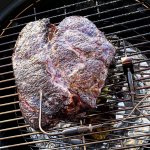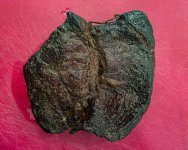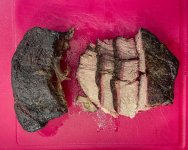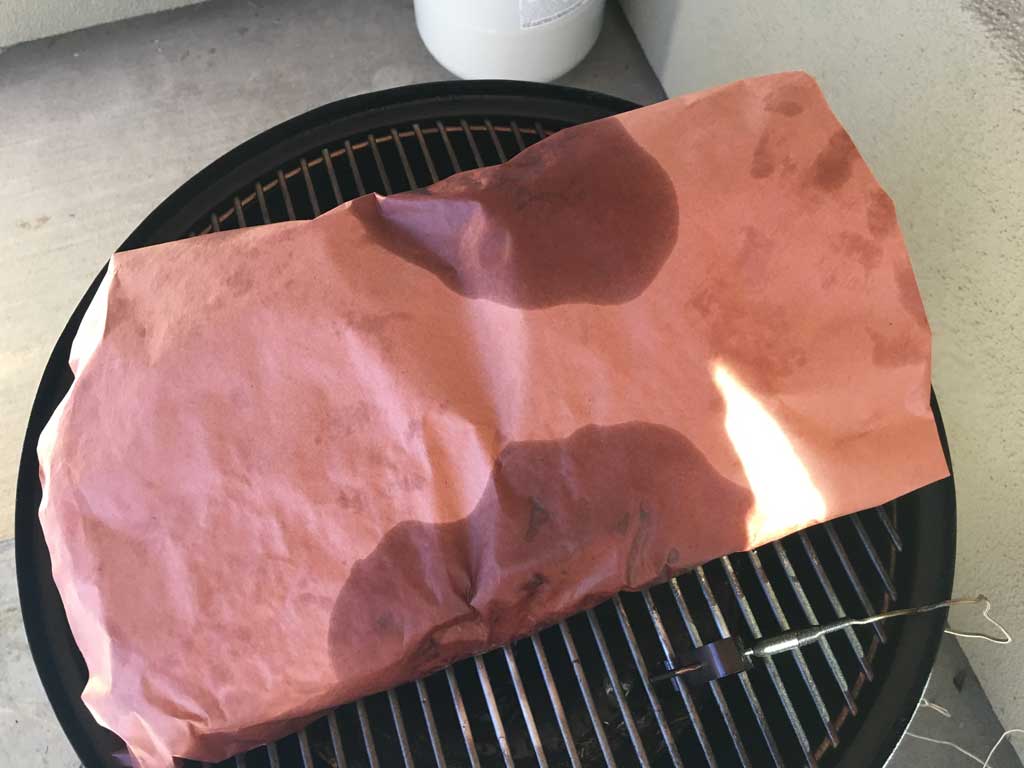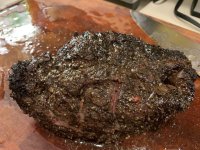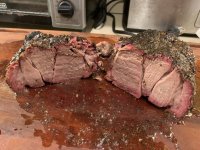OliverLeveritt
TVWBB Member
Three point something pound chuck, dry brined w/ 9 grams sea salt then air dried for 42 hours due to schedule conflict the previous day. Added black pepper before smoking. S&P Only.
WSM 14. Dry wrapped pan. B&B briquettes. B&B Post Oak chunks.
250° - 260°.
@ 2 hrs, hard stall and reverse at 158°. Pull & wrap in BP. @ 4 hrs, pull at 205°. Hold on rack in large covered roaster at 155° for 6.5 hours. (Went to go buy a used WSM 22. Traffic . . . . )
Nice fragrance. Good beef taste with smoke floating over the tastebuds. Bits of pepper. Good salt level. Drier than I'd like.
Considering that this is the third time I have cooked on charcoal in my life AND the third time I have smoked anything, I won't complain. I'm working the learning curve on a small scale, so it's all good. I certainly don't feel that this is a mistake that I have to eat. LOL!
Tomorrow, I'll probably chop some of the chuck and cut some BBQ sauce with a bit of cider vinegar and olive oil to thin it and warm it up with just a bit of that on it.
WSM 14. Dry wrapped pan. B&B briquettes. B&B Post Oak chunks.
250° - 260°.
@ 2 hrs, hard stall and reverse at 158°. Pull & wrap in BP. @ 4 hrs, pull at 205°. Hold on rack in large covered roaster at 155° for 6.5 hours. (Went to go buy a used WSM 22. Traffic . . . . )
Nice fragrance. Good beef taste with smoke floating over the tastebuds. Bits of pepper. Good salt level. Drier than I'd like.
Considering that this is the third time I have cooked on charcoal in my life AND the third time I have smoked anything, I won't complain. I'm working the learning curve on a small scale, so it's all good. I certainly don't feel that this is a mistake that I have to eat. LOL!
Tomorrow, I'll probably chop some of the chuck and cut some BBQ sauce with a bit of cider vinegar and olive oil to thin it and warm it up with just a bit of that on it.

